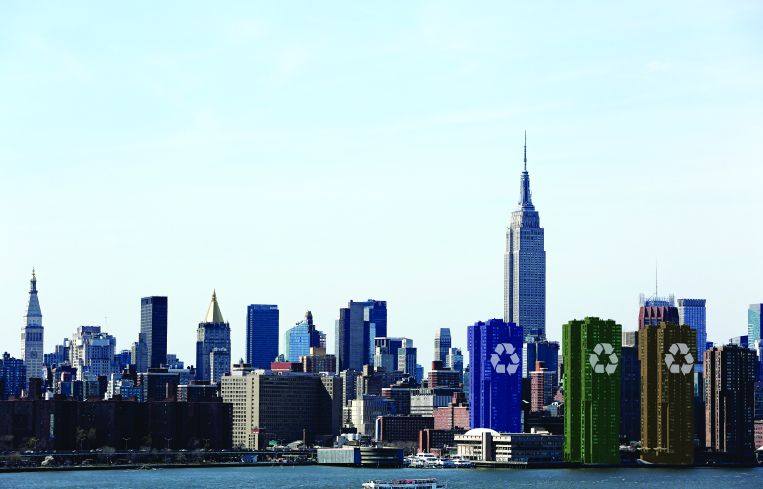Billions of Square Feet of Offices Expected to be Obsolete by 2030, C&W Finds
By Mark Hallum February 24, 2023 4:22 pm
reprints
It’s not enough that major office landlords, including Brookfield Properties, have recently defaulted on building loans and the debt on the famous McGraw-Hill Building in Manhattan is now up for sale. There could be some more woe in store for owners.
A new Cushman & Wakefield report found that the U.S. is expected to end the decade with 1.1 billion square feet of vacant office space. Worse still, more than 25 percent of the country’s total 5.56 billion square feet of office, about 1.4 billion, will be considered obsolete.
The report found that only 4.61 billion square feet of offices will be needed by 2030 — thanks to the shift of hybrid work — and 330,000 million square feet of the 1.1 billion square feet of vacancies expected will be considered “excess vacancy.”
But that doesn’t mean there’s no hope.
The study, titled “Obsolescence Equals Opportunity,” showed that there was plenty of demand for tenants for high quality office space with not a lot of it coming online, giving investors the chance to pump some money in older buildings to attract tenants.
“Really, what we’re actually seeing, what we’ve outlined in the report with a few charts, is that we actually have demand recovering,” C&W’s head of global investor insights Abby Corbett, one of the authors of the report, told Commercial Observer. “Things get a little bit worse in the middle of the decade because we have an impending slowdown in the economy coupled with all the necessary, secular one-off adjustments that tenants are making as their leases roll in relation to the work from home trend. But even before this period, we’re actually seeing office demand strengthen in various markets.”
Newer built offices have seen more than 100 million square feet of positive absorption since 2020 but only 15 percent of the country’s office stock will fall under this category by 2030, according to C&W. About 60 percent will be in the middle ground — requiring some form or upgrades to avoid obsolescence — while the rest will be “increasingly undesirable and will need to be reimagined and made relevant for the future,” the report said.
The question is whether or not investors will need to reposition a property or repurpose it entirely. For repositioning, Corbett said it isn’t always necessary for owners to invest upwards of $40 million to entice office users back.
Taconic Capital Advisors, the owners of International Plaza in Dallas for example, repositioned its two-building, 700,000-square-foot office towers for only $20 million, with the majority of the work focused on the lobby and other common areas, Corbett said. That led to a 372,000-square-foot lease with Tenet Healthcare Corporation before construction even finished.
And some repositionings can be done for as little as $5 million, according to Corbett.
Multifamily conversions are larger lifts with ceiling heights and floor ratios coming into play. Healthcare and life sciences conversions have to make way for equipment with floor loading capacities and making sure elevators can handle different kinds of product, Corbett explained.
However, the reality remains that the older the building, the higher the vacancy, according to the report.
Buildings built (or last renovated) in the 1980s, for example, have an average vacancy rate of 19 percent while those in the 2010 to 2018 age range only carry a 13 percent vacancy rate, the report noted.
But when a specific building gets a facelift it doesn’t necessarily speak to its current success either.
The McGraw-Hill Building at 330 West 42nd Street got a $120 million makeover in 2020 where Resolution Real Estate gave the 1980s interior of the landmarked 1920s structure to attract tenants after fallout from the pandemic.
But the building has sat vacant since with the owners, Deco Tower Associates, going through the process with the Landmarks Preservation Commission to convert to residential. But it hasn’t stopped the $140 million loan going up for sale at a blended rate of 6.59 percent and a default rate of 24 percent.
Other landlords such as Scott Rechler, CEO of RXR said that the firm may have no choice but to give a couple of properties back to the bank as there just aren’t any viable options for those office towers.
And it also goes without saying that some markets will be better for investors than others.
The C&W report outlines a number of “gateway markets,” metropolitan areas where the office supply and demand will rightside itself quickly and others that will make a slower adjustment to the times.
The Sun Belt states have seen growth from migration away from the major office markets in the northeast and California, and they show the highest potential for opportunities for repurposing and repositioning properties. Markets like Austin, Texas have seen the benefits of this migration and subsequent job growth.
While those markets still have office stock that is stuck in limbo.
But New York City continues to dominate as a bread basket for employers tapping into a serious talent pool.
“New York continues to be a destination for where people want to live, work and where they want to visit. We’re seeing an all time low vacancy rate for residential,” C&W tri-state president Toby Dodd told CO. “There was a revolution in retail and we’ve seen some great creativity and innovation that’s driven the return in that market. We’re going to see the same in the office … Think about it from the standpoint that most of these buildings were built before any of us had a computer, let alone an iPhone. That will shape demand.”
Mark Hallum can be reached at mhallum@commercialobserver.com.


